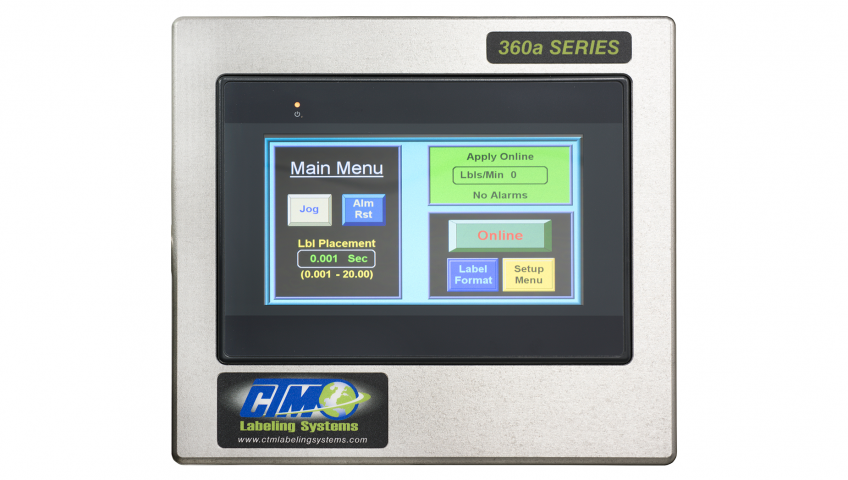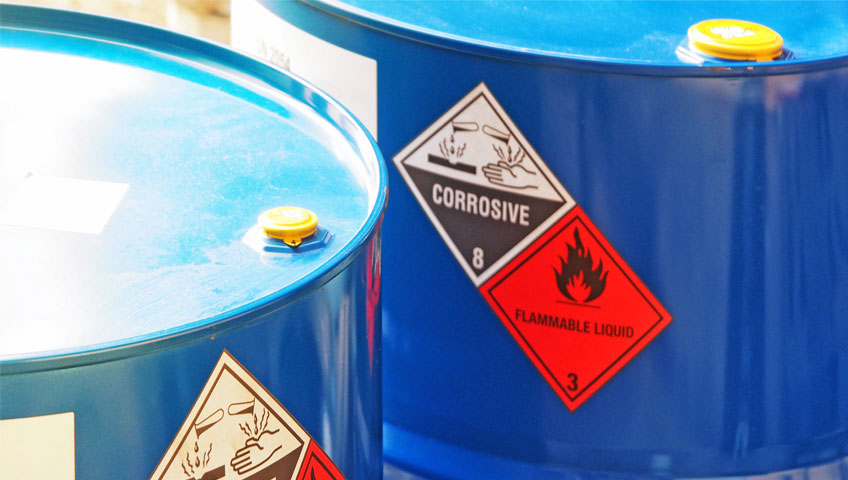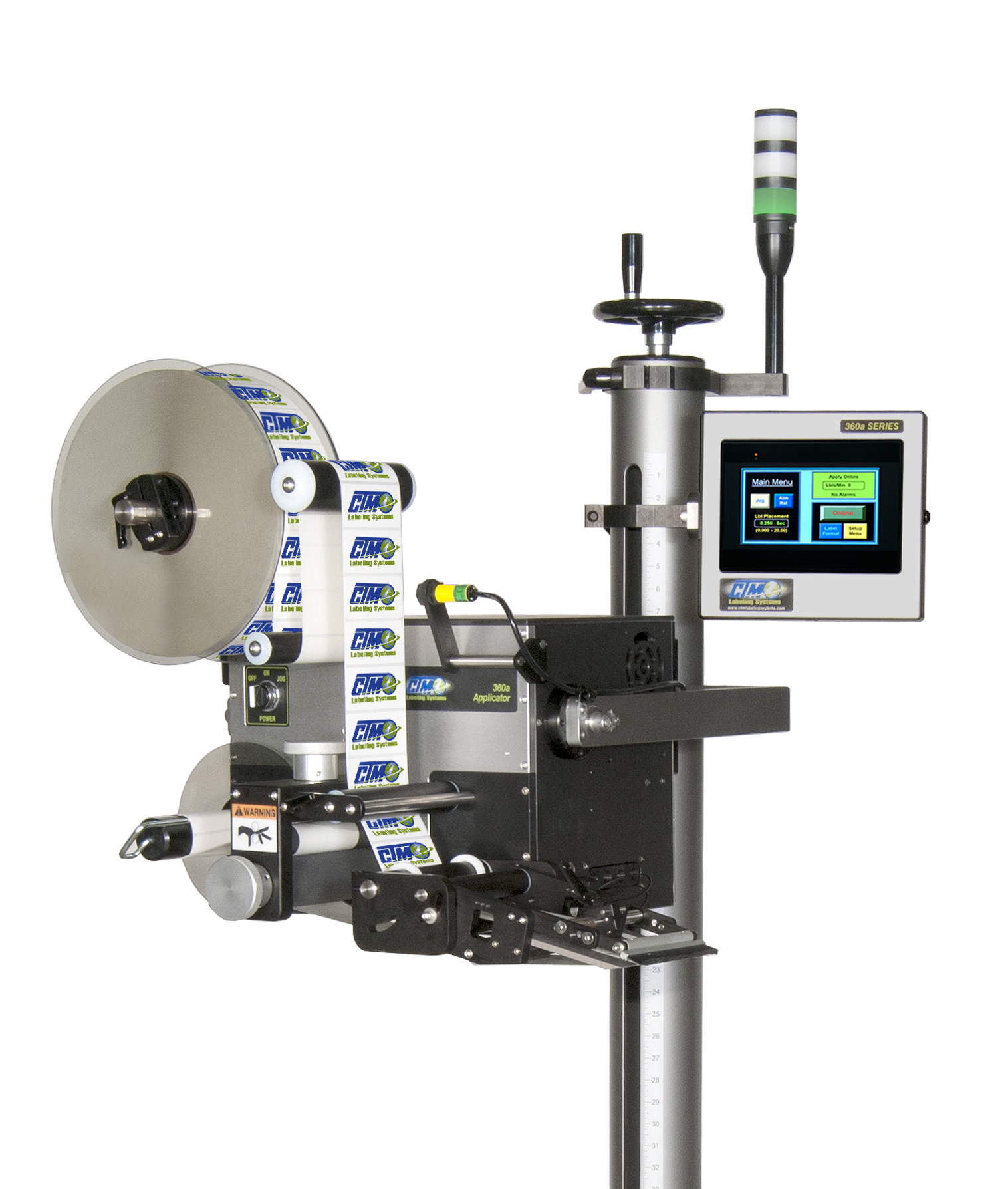Product labeling is vital in manufacturing, shipping, and distribution processes. Leveraging technology to improve labeling can make a huge difference in overcoming challenges and providing a leg up on your competition.
A tag affixed to a part, product, or package is what customers depend on to “communicate” to them the identity and quantity of items delivered. An in-line label applicator system can make the process more efficient and reliable. If you are already using a tape or seal system, an in-line label applicator can work in conjunction to completely automate your packaging process.

There are several in-line label applicator systems on the market. Before you move forward with any type of in-line label applicator, it is crucial to determine and understand how it would be used and how it would fit in with your current operations. Vendors should take a consultative approach to assist and guide you through the decision-making process.
Once your know the scope and requirements, have completed a Site Survey, and researched the reputation and support of the manufacturer, you can begin to think about the implementation process and how it will smoothly fit into your existing operations.
Before you move forward with any type of in-line label applicator, it is crucial to determine and understand how it would be used and how it would fit in with your current operations.
A Successful Implementation Should Include

A successful implementation should include a labeling solution that will fit in smoothly if you have existing operations.
The in-line labeling system needs to be
- user-friendly and match the physical space available.
- customizable to meet your label application needs.
- seamlessly integrate into your existing conveying process flow or a new installation of conveying to meet your needs.
Your site survey will help both you and the label applicator manufacturer understand your operation's specific needs and help you make a selection that will blend seamlessly into your manufacturing or shipping processes.
Ease of Operation
A user-friendly labeling system should include these ease of operation features:
- User-friendly interfaces or touchscreen displays for ease of set-up.
- Tool-less platen, roller, and printhead removal for cleaning, replacement, or repair.
- Easy access to ribbons and media for quick changes.
Current and Future Needs
Your labeling system should provide versatility and feature flexible options to meet not only your current needs but future needs as your business grows. This ensures that you get as much out of your label applicator solution investment as possible.
Label Applicator Systems to Consider

Label Applicator Systems you might want to consider:
- An applicator-only system that can be configured in right- or left-hand dispensing mode depending on what works best with your conveyor is the CTM360 Series.
- The CTM360a Integrated Loose Loop Labeler also has the versatility to operate as a simple dispenser for pre-printed labels or print and apply labels.
These units can be customized for a specific application or be used off the shelf “head on a stick.”
- The Zebra ZE500 also provides right- and left-hand dispensing modes and includes a print engine plus barcode printing and RFID capabilities.
- A variety of mounting and orientation opinions are available with the CTM3600 series, and it features 203, 300, and 600 dpi print resolution choices.
- The SATO S84-EX Series and S86-EX Series include a print engine (4″ and 6″ print width) with the capacity for field-configurable print resolution changes and a wide range of connectivity options, including series, parallel, Ethernet, USB, and wireless. It also has barcode printing and RFID capabilities.
- Another print engine option is the LT408 that provides a low volume and lower cost print engine.
There are other manufacturers, but these are our most popular models making up 80-90% of the print engine market.
Learning To Use Your System Correctly
It is crucial to get the right equipment to meet your needs, but learning to use it correctly is also essential. Without proper training, you won’t get your full return on investment and it could cause safety issues for employees. Training should be included in your contract.
Some questions to ask regarding training include:
- Does the manufacturer provide training, and is the training in-person or virtual with a person to answer questions or recorded videos?
- Are written step-by-step instructions provided as well for future reference?
- Is the training for one or two people or a larger group?
- If new employees are hired, how will they be trained?
- If there are equipment updates and training is required, will the manufacturer provide?
- Is the training included in the contract or is that an extra fee?
You can learn more about the training and support requirements in the post, What Is The Reputation of The Manufacturer And Will They Provide Support?
It is crucial to get the right equipment to meet your needs, but learning to use it correctly is also essential.
Make The Correct Decision
Taking time to investigate automated in-line label application system options will help you make the right investment and feel confident that your business operations will run more efficiently and provide a positive ROI for years in the future.
At Imprint Enterprises, we partner with industry leaders to offer a variety of quality labeling systems. We know one size does not fit all, and if you can't find what you need in an existing model, we can custom engineer a solution that will fit your unique requirements. Our knowledgeable team will work closely with you through all stages of planning and implementation. Your success matters to us!
For more information, visit www.imprint-e.com or contact us at (855)745-4464 or drop us an email at customer_service@imprint-e.com.





